What Researchers Are Saying About Charlie Chaplin, and a Rare Chaplin Film is Rediscovered
posted August 27, 2010 1 Comment
![]()
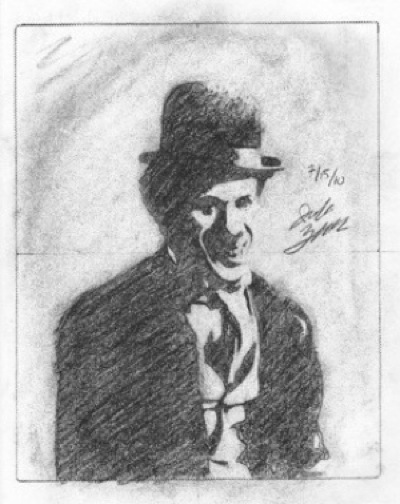
Charlie in the Heartland: An International Charlie Chaplin Conference
October 28-30, 2010
Ohio University Zanesville, Zanesville, Ohio
d
d
d
d
d
d
d
It remains shocking to many film enthusiasts that the reception of Charlie Chaplin in America does not compare with the reception of Charlie Chaplin in, say, the United Kingdom, Europe, or even Japan. Even in the 1960s, children in many other nations grew up watching the Little Tramp and Chaplin’s other alter egos.
Not so, in the United States, although a schooling in other greats of the silent era – Fatty Arbuckle, or Buster Keaton, say – has been, and remains, even more lacking.
Still, a slowing of Chaplin-related publications, American or not, seems highly unlikely, says Charles J. Maland, a professor of English and cinema studies at the University of Tennessee.
“People who are great artists, who have careers that evolve in interesting ways and who also live interesting lives, and Chaplin did both, will continue to get biographies written about them for a long time,” says Maland, who is working on a book about the production history of Chaplin’s City Lights. Like other modern-day Chaplin scholars, he is able to make use of many primary documents that are among increasing stores of material available to researchers – at the Cineteca di Bologna in Italy; at the city archives in Vevey, the Swiss town where Chaplin spent his last years; and elsewhere.
Says Maland: “People who write critical biographies are all shaped by their own times, and their own interests and predispositions. So we’ll continue to get interesting biographies of Chaplin for a long time.”
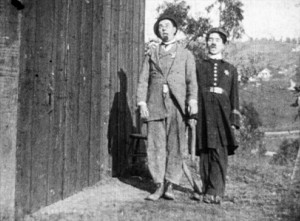
At the conference, which takes place at the Zaneville branch campus of Ohio University, Maland, the author of Chaplin and American Culture: The Evolution of a Star Image (Princeton University Press, 1989), will also be honored for his contributions to Chaplin scholarship.
“New” Chaplin at Cinecon
Hope never dies that major finds of lost films will turn up, and nothing fueels them quite as much as the discovery of small but significant items. Two of those – one featuring a very young Charles Chaplin, the other Stan Laurel – will be presented in September at Cinecon 46, the annual showcase rarely seen and classic motion pictures, which this year takes place over Labor Day weekend, from September 2-6.
An appearance by Chaplin that until recently went undocumented is a highlight of A Thief Catcher, a 1914 Keystone Comedy featuring Ford Sterling, Edgar Kennedy, and Mack Swain. The Mack Sennett short will makes its West Coast “re-premiere” at the historic Egyptian Theater in Hollywood during the five-day Cinecon 46.
Film historian Paul Gierucki has had the film since last year, but didn’t realize that Chaplin appeared in it until he viewed the film some months after purchasing it. The 16mm film was made during Chaplin’s year with Sennett and has never been included in any Chaplin filmography.
According to a Cinecon announcement, Chaplin is officially credited with appearing in 35 Keystone films, but he claimed in various interviews that he had also played bit roles as a cop and a barber while at the studio. He did not, however, name the films, and none has turned up until now.
Most of Chaplin’s output from the prime years of his career have been well maintained, but that is not so for his early years in film, including his very earliest, Keystone output. He had not yet become popular, and did not have control of output in which he was not yet the star. As BFI officials note, that material ironically suffered much abuse when he did become popular: Original copies of films in which he appeared were cut up, edited, and repackaged to satisfy audience demand for his performances.
Gierucki found the Thief Catcher print in a trunk at a Taylor, Michigan, antique store. “I could tell it was a Keystone comedy, so I haggled and got it for $100,” says Gierucki. In March 2010, when he watched it, he was astonished when Chaplin appeared as a cop about six minutes into the film for an extended two-minute cameo. “My heart stopped,” Gierucki recalls. “I recognized him immediately.”
A Thief Catcher stars Keystone’s famed comic villains Ford Sterling and Mack Swain, with support from Edgar Kennedy. It was in production January 5-26, 1914, soon after Chaplin arrived at the Keystone studio, and was the second or third screen role of his fledgling American career. (Sennett historian Brent Walker reviews the film here.)
Also to be screened among about 40 rare and unusual films at Cinecon is the last footage shot of Stan Laurel – a color home movie made just weeks before the actor’s death. It shows Laurel with his wife at their apartment in Santa Monica.
Laurel & Hardy authority, Tyler St. Mark, will present the film as part of a program of the pair’s appearances. He acquired it and restored it, and will present it along with other rare artifacts from his collection.
Also at Cinecon 46: the only surviving reel of Flaming Youth, the lost Colleen Moore feature that practically ushered in the age of the “flapper,” and the recently restored short, From Bad To Worse, featuring Charley Chase that has not screened since its original release almost 75 years ago.
More information: look on Facebook for Friends of Cinecon Classic Film Festival, or www.cinecon.org.
The conference is the first meeting en masse of Chaplin researchers and zealots since a similar event at the British Film Institute, in 2005; it is also the first such gathering, ever, on American soil. Among attendees will be scholars and fans from at least nine countries.
Despite the long pause between Chaplin conferences, the event will register the continuing, extensive attention that the incomparable Little Tramp commands in scholarly circles. “It’s a very active group, although not as active as Hitchcock,” says organizer Lisa Stein, an assistant professor of English at the Zanesville campus (who has cats named Syd and Charlie, naturally). She says: “Chaplin scholarship has its ups and downs; it’s always a problem in America, which is why I wanted to have the meeting here.”
By contrast, European, British, and Asian scholars have never neglected Chaplin’s films, political views, and audience and critical reception, she notes. The British Film Institute, for example, has an extensive web site dedicated to Chaplin, with links to information about restoration and presentation efforts, around the world.
The Zanesville event will feature several presentations about Chaplin’s early career. Appropriately so, because it falls 100 years after the English-born comic’s first trip to the United States, in October 1910, with Karno’s London Comedians. There, with Stan Laurel as his understudy, Chaplin continued his stage apprenticeship, three years before his motion-picture debut.
Among confirmed presenters are David Robinson, the author of the acclaimed Chaplin: His Life and Art (McGraw-Hill, 1985); Kate Guyonvarch, director of Roy Export S.A.S. (the owner of the Chaplin films made from 1918 onwards) and the Chaplin Association office in Paris; Cecilia Cenciarelli, archivist and head of Progetto Chaplin, at the Cineteca di Bologna in Bologna, Italy; Frank Scheide, a professor of communications at the University of Arkansas; Linda Wada, founder and editor of ednapurviance.org, www.ednapurviance.org who will present her documentary film about Chaplin’s leading lady from 1915 to 1923, Edna Purviance: Angel from Nevada; and film preservationist David Shepard, who will present several Chaplin films, including the newly restored Tillie’s Punctured Romance, the first feature-length comedy film from Mack Sennett’s Keystone Film Company and the Christie Film Company, produced in 1914 with stars Marie Dressler, Mabel Normand, and the Keystone Kops, alongside Chaplin.
[Read an interview with Guyonvarch and Cenciarelli.]
During the conference, Chaplin shorts, outtakes, and oddities will be shown, and attendees can even take part in a Chaplin film-parody competition and a Chaplin lookalike contest, on Halloween. The Zanesville Museum of Art will host a Chaplin-oriented exhibit, “Charlie Chaplin and American Culture,” beginning October 1.
The gathering will also, of course, provide an opportunity for participants to catch up on all the recent developments in Chaplin studies and lore. The major Chaplin development of recent years has been the launching of the Cineteca di Bologna’s Chaplin Archive Database. It permits a search of Chaplin documents – production records, scripts, personal documents that he gathered for his autobiography, correspondence, photos… “anything you like to name,” as Stein puts it. Users can search the catalog online, but must travel to the Bologna institution to view documents.
The research tool is just now coming to wide attention among film scholars. For its completion, after some stuttering development over the last several years, scholars have to thank the Chaplin family foundation, which has now made Chaplin records far more readily available than they have been, in the past.
That promises many new developments in Chaplin studies, says Stein, whose own Chaplin publications include a 2006 publication from the Cineteca di Bologna, in its Progetto Chaplin series, and a new edition of A Comedian Sees the World, a travelogue Chaplin wrote in 1932-3 about his world tour following the premiere of City Lights. In November 2010, Mcfarland & Co. will issue her Syd Chaplin: A Biography, the first study of the life and art of Charlie’s half-brother and manager.
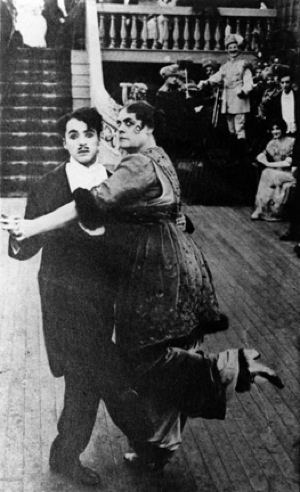
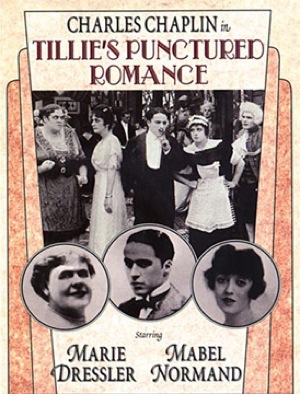 A steady stream of restorations is also fostering studies of Chaplin.
A steady stream of restorations is also fostering studies of Chaplin.
In 2003, the UCLA Film and Television Archive issued the restored Tillie’s Punctured Romance, a first-ever feature-length comedy film. Mack Sennett hired Chaplin to play the male lead – not the Little Tramp, but rather a villainous seducer, albeit a comic one with the Tramp’s trademark demeanor, bowlegged walk, and twirling cane.
As the film’s restorers have noted, Tillie’s Punctured Romance made Chaplin a star, but it then was subjected to cuts that harmed its reputation. The UCLA Archive pulled together footage from numerous sources to produce a full-length, 82-minute version.
Jeff Massino’s Flicker Alley and David Shepard’s Film Preservation Associates are set to release a 4-DVD set of the Keystone films, in late October 2010. Chaplin at Keystone (1914) collects 34 comedy shorts from Chaplin’s year at The Keystone Film Company. The packages results from eight years of collaboration among the British Film Institute, Cineteca Bologna and its restoration laboratory L’Immagine Ritrovata in Italy, and Lobster Films in Paris. Many of the films have been transferred from 35mm materials, with others from 16mm reduction prints.
One of the challenges of restoration, as of so much early film, is that it suffered much cutting and shortening. In Chaplin’s case, the problem only became worse as his popularity grew, and demand for prints, even bowdlerized ones, grew.
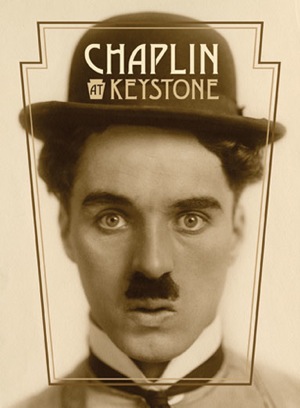
In the 1950, when he learned of Rohauer’s collection, Chaplin demanded that the films be returned to his own archive. Rohauer complied, with respect to footage still protected by copyright. But he kept film made prior to 1917 on which Chaplin’s copyright had expired. After Rohauer’s death, his remaining holdings were donated to the BFI.
Scheide has noted that many Chaplin outtakes were thrown out or ruined by neglect, but what remains gives a good sense of Chaplin as perfectionist, demonstrating that his brilliant performances were far from effortless and spontaneous.
The Present and Future of Chaplin Studies
Among papers at the Zanesville conference will be at least nine by graduate students – a development that Stein calls “very encouraging” as it suggests that Chaplin output should soon increase in the United States, as it can stand to do.
Those younger scholars will swell a coterie of Chaplin scholars that includes few researchers who devote the bulk of their careers to the comedian. Stein numbers the scholars devoting a major portion of their work lives to Chaplin at about 15, in the world. Still, there are many other part-timers, such as several who presented at the BFI meeting in 2005 (see below).
The group of newcomers may be coming onto the scene at just the right time, Stein suggests. She says that after a good deal of indifferent Chaplin publishing in recent years, “there’s a lot of room for something new.” Among recent books of note, she lists last year’s Chaplin: The Tramp’s Odyssey (Thomas Dunne Books), by the British novelist and biographer, Simon Louvish.
 Still considered one of the finest studies of Chaplin is David Robinson’s Chaplin: His Life and Art (DaCapo, 1991). For his quasi-official biography, he was able to pore over documents and records not available to other scholars. Now that those records are more readily available, at the Cineteca di Bologna, more studies are certain to appear.
Still considered one of the finest studies of Chaplin is David Robinson’s Chaplin: His Life and Art (DaCapo, 1991). For his quasi-official biography, he was able to pore over documents and records not available to other scholars. Now that those records are more readily available, at the Cineteca di Bologna, more studies are certain to appear.
In his Charlie Chaplin and His Times (Simon & Schuster, 1997), Kenneth S. Lynn, an American historian who long taught at The Johns Hopkins University and who died in 2001, was critical of Chaplin’s politics, but was praised at least for his examination of Chaplin’s early career.
Similarly, Frank Scheide looked into the precursors and inspirations of Chaplin’s career in his Comedy and Nineteenth and Early Twentieth Century English Music Hall As Basis for Examining the 1914-1917 Films of Charles (Charlie) Spencer Chaplin (University of Wisconsin Press, 1990). More recently, Scheide co-edited Chaplin’s Limelight and the Music Hall Tradition (McFarland, 2006).
Melvin Stokes, a British film historian and senior lecturer in history at University College London, is reportedly working on a study of Chaplin’s reputation in France, which was generally more positive than in the US, certainly during his years of being hounded by the House Un-American Activities Committee. Stokes is the author of D. W. Griffith’s ‘The Birth of a Nation’: A History of ‘The Most Controversial Film of All Time’ (Oxford University Press, 2007), and co-editor of, amongst other books, Going to the Movies: Hollywood and the Social Experience of Cinema (University of Exeter Press, 2007) and Cinéma et histoire (M. Houdiard Editeur, 2008).
Outside of the United States, Chaplin studies have long fared much better than within it, Stein says. Among European specialists, for example, is Adolphe Nysenholc, a Belgian scholar, novelist, and playwright who has written about Chaplin throughout his career. He enjoys the honor of being the first person in the world to complete a doctoral dissertation on Chaplin, in 1976. In 1979 he published a book about Chaplin, L’Age d’or du comique, (Editions UB) while in 1989 he organized the first international Chaplin conference, at the Sorbonne, in Paris (its proceedings were published in 1991, in English and French, by Editions Mouton de Gruyter).
In Kyoto, Japan, Ono Hiroyuki leads a vibrant group of researchers. At the 2005 BFI conference he spoke about Chaplin’s influence on Japanese Kabuki theater – in August, 1931, just six months after its world premiere, City Lights was adapted in Japan as a Kabuki performance titled Komori no Yasusan. Ono, a film and theater critic as well as musical-theater director, playwright, and composer, is the author of Charles Chaplin in Japan (Chaplin Society in Japan, 2006), The Whole Story of Chaplin Out-takes (NHK, 2007), The Plot to Assassinate Chaplin (Media Factory, 2007), and (with David Robinson) Chaplin and War (Chaplin Society in Japan, 2007). At the Zanesville meeting, he will talk about Chaplin’s Japanese butler and right-hand man from 1916 to 1934, Kono.
Incidentally, the plot to assassinate Chaplin that inspired Ono’s 2007 book came during his last visit to the country, in 1932. On May 15, six naval officers broke into Prime Minister Tsuyoshi Inukai’s residence, and murdered him, intent on fomenting a revolution that would usher back into power an emperor-led government. Court-martial testimony, which turned out to be testimony to the esteem that Chaplin commanded in Japan, revealed that the deluded plotters had also intended to kill the actor, imagining that that would induce the United States into war with Japan.
He was not quite that popular – certainly, not among American powerbrokers.
WHAT TO EXPECT IN ZANESVILLE
You can get a sense of what to expect at the 2010 Chaplin conference from the many papers from the 2005 BFI Chaplin meeting that are online at www.bfi.org.uk/chaplin. Some examples:
Jennifer Bean, who teaches film and history at the University of Washington presented her paper “The Art of Falling Apart: Chaplin and the Keystone grotesquefilme.” Since, she has contributed commentary for a BBC-2 radio documentary, Smile: The Genius of Charlie Chaplin, narrated by Robert Downey Jr, and has participated in New York Public Radio’s “American Icon” series’ segment, “Chaplin’s Tramp.”
Bryony Dixon examined Chaplin’s 20-year English music-hall apprenticeship, and delved into what he drew from the range of popular theatrical conventions, particularly the tradition of the harlequinade, a form of slapstick that arose in the 16th century as a slapstick development from the commedia dell’arte.
Sidney Gottlieb, a professor of media studies at Sacred Heart University, argued that Chaplin’s autobiographical writings reveal him as more painstaking, probing, thoughtful, and analytical, rather than primarily intuitive, about his craft than is general believed.
Andrew Horrall, an archivist at Library and Archives Canada, discussed the extensive influence of Chaplin on British military recreational life during World War I. He showed, for example, how much they associated with Chaplin’s indomitable spirit and “jumble-sale gentility” as he battled ostensibly more powerful men.
Dan Kamin described his work preparing Robert Downey Jr for the role of Chaplin in Richard Attenborough’s 1992 biopic, Chaplin: The Movie.
Charles Maland, University of Tennessee, discussed how his study of Chaplin’s cultural reception was shaped by his sense of the deflation of Chaplin’s reputation, and how it led the actor to decide to leave his adopted country in 1952, after almost 40 years. Maland, in his first Chaplin book, Chaplin and American Culture (Princeton University Press, 1991), surveyed how Chaplin’s star image evolved over time, from his arrival in the United States in December 1913 until his death on Christmas Eve, 1977.
Kathryn Millard, Macquarie University, discussed imitations of Chaplin from the time of his career until the present, in cinema, television, theatre and advertising around the world, often adapted to local cultural expectations. She described, for example, the 1916 Charlie At The Sydney Show, the wave of “Oriental Charlies” in 1950’s Hong Kong, imitations of the Charlie Chaplin walk in Stalin’s Russia, and Sridevi’s Chaplinesque riff in the Bollywood mega-hit Mr. India. She talked about Chaplin’s influence on the play of street kids in Brazilian slums, Japanese pachinko machines, and an Indian boot-polish commercial.
Steven J. Ross, a historian at the University of Southern California, presented Chaplin, who grew up in poverty, as a radical pioneer of visual politics, a new form of political communication that spoke directly to millions of disenfranchised working people. Ross noted that the anti-authoritarian Chaplin, long before his overtly political films, did that so imaginatively and effectively that he provoked the fear and enmity of the likes of J. Edgar Hoover and other insiders of traditional politics.
Neil Sinyard, of the University of Hull, described the friendship of Chaplin and novelist and critic Graham Greene, who had generously praised the actor in his film reviews. The two became close while living close to each other in Vevey, Switzerland, and displayed political, personal, and artistic affinities, Sinyard noted.
David Trotter, Cambridge University, portrayed Chaplin as a Modernist figure due to such features as his “hypermimesis” – his consistent interest in mimicry for mimicry’s sake.
– Peter Monaghan
Previous Post: Detecting the History of Sound-on-Film
Next Post: Iota Online Fundraising Auction

Comment (1)